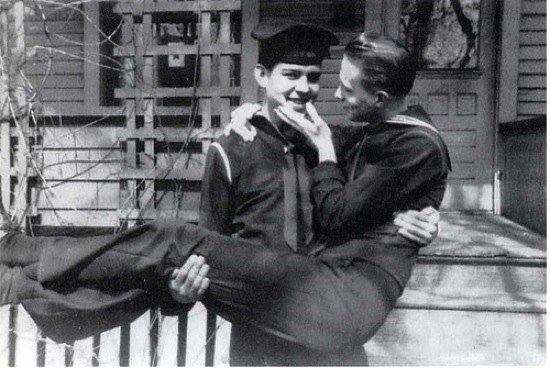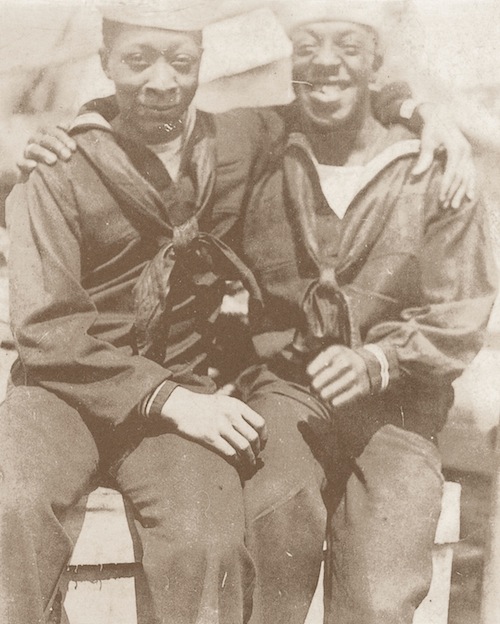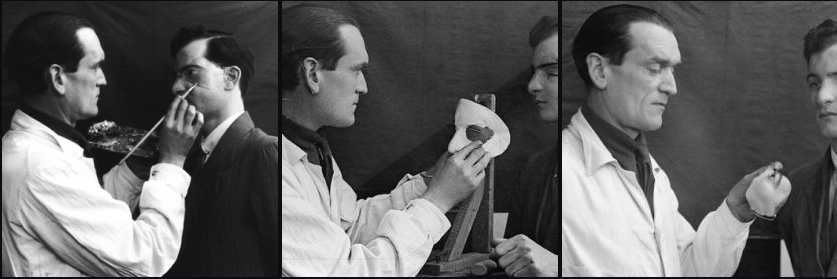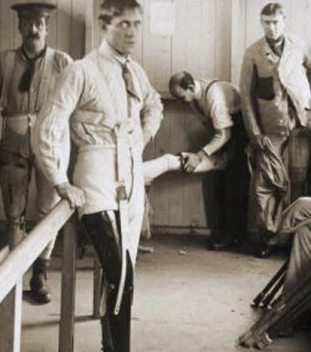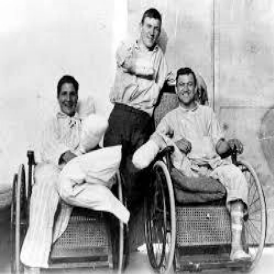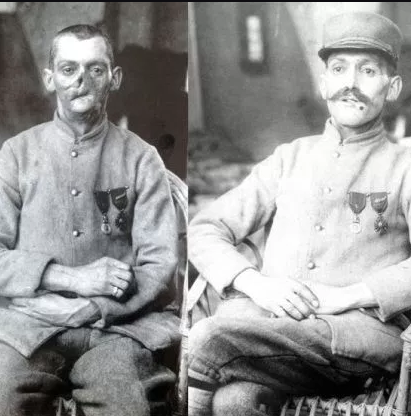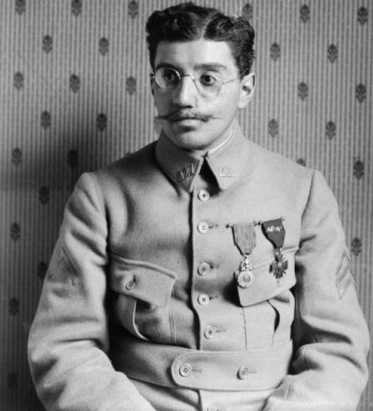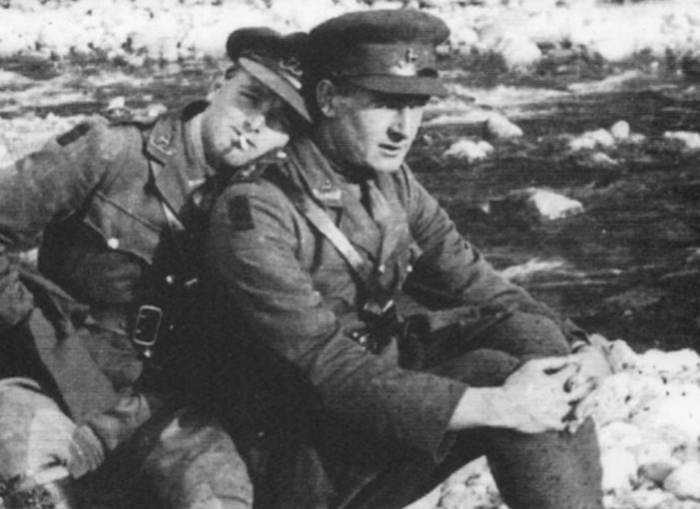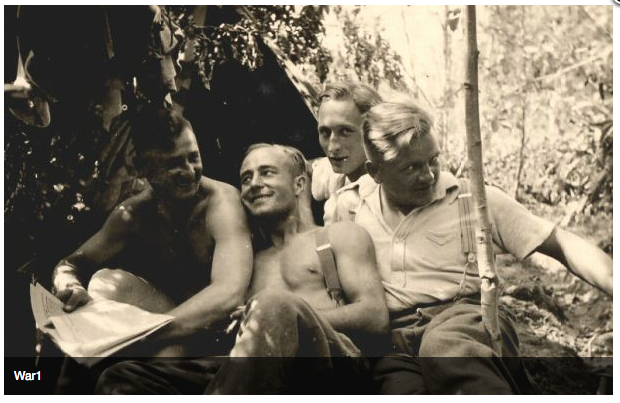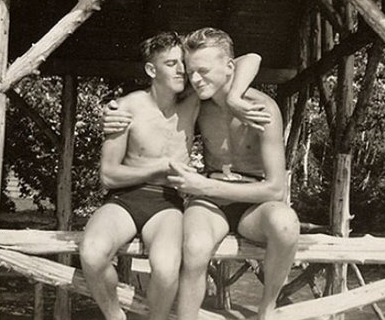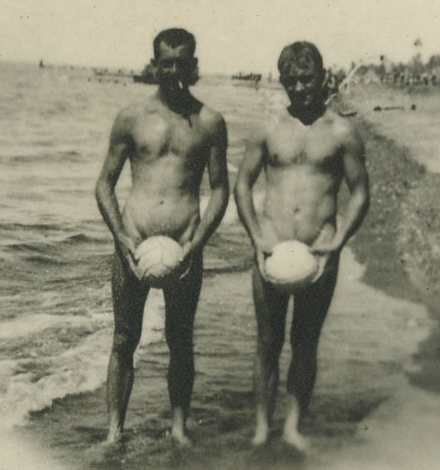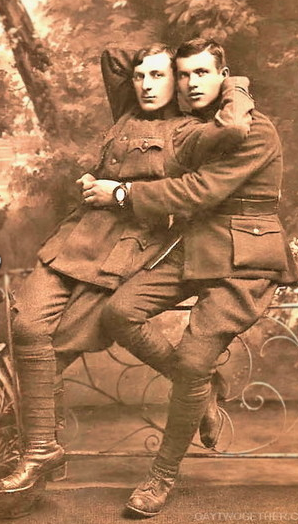Love's Frontier 1918
LOVE’S FRONTIER
LOVE’S FRONTIER is grounded in the fact that same sex relationships were decriminalized in France in 1791, creating a reality among the French of several generations who had the ability to experience same sex intimacy as a part of their culture differently most of Europe. For Whitfield, this fact has triggered an exploration of how intimacy in contexts of sudden death, profound trauma, and mental and/or physical impairments brought to life during World War I might parallel the experience of current generations of combatants who are entering global theaters of war free, for the first time, to openly express and forge queer relationships with fellow soldiers.
LOVE’S FRONTIER will include evenings of readings of live testimonies/ remembrances of queer love in the theater of war from the last century by veterans with whom Whitfield collaborate through various association and support organizations as well as social media groups.
These readings will take place in an installation consisting of an amalgam of 3-D portraits of actual veterans that take their inspiration for prosthesis developed out urgent needs to respond to devastating injuries in combat over the last century. One aspect of these portraits will be facemasks referencing those produced in WW1 but amalgamating the facial features and structures of the soldiers in queer loving relationships. These masks/portraits will be added to a battleground inspired “field” consisting of other fragments and reconfigured body parts and artifacts of intimacy and war. Whitfield sees this landscape as a meditation on love and caring as much as it will be a representation of a site of profound carnage.
To create this field of portraits, Whitfield will collaborate with artist Arthur Young-Spivey who, for 15 years has worked in the evolving field of affordable 3-D rendering and printing. Together they will design, scan, print and fabricate the “portraits” that will constitute the “field.” Ten to twelve relationships will be the subjects of these portraits. Full body scans will be required of each member of these relationships. The execution of these scans in Paris or New York will be the goal. Young-Spivey will execute printing and production of subjects in the New York region at Bluedge (http://www.bluedge.com/ ), the firm where he is head of Technology Business Development.
Whitfield’s intention is to work with Young-Spivey to combine digitally rendered 3-D information about each member of the love relationship into a “single body in crisis” metaphorically articulating the extreme nature under which the bond was formed. In conjunction with the production of these “portraits”, Whitfield will also conduct interviews with the subjects that will provide narratives that can be integrated into the installation. It is anticipated that interviews and scanning will take place in Paris where Young-Spivey’s travel with Whitfield to execute 3-D scans will insure consistency in quality and formatting. It is also anticipated that Young-Spivey will identify facilities where full body scan can be executed in facilities in and near Paris and files will be provided to Young- Spivey for further development and production .
Specifically, Young-Spivey’s collaboration with Whitfield could include capturing individuals faces and other body parts with a 3D Scanner that will record both the expression, hair, any distinguishing features in full color at a 1:1 scale. Once captured the 3D data will then be post processed to be made ready for the 3D printing process. The specific scope of their work together will be dependent upon the narratives that evolves through the interview process as well as budget limitations. To augment this budget will execute a crowdfunding campaign and carryout various community based fundraising activities as well as solicitation of support including in-kind contributions from corporations and private donors.
Some background: World War 1 and the Making of the Global 20th Century
- from https://wwihist258.weebly.com/bodies.html
The Sexual Body - World War I and Sexual Pleasure and Abuse
The Great War created numerous opportunities for both sexual pleasure and abuse. Civilians and soldiers found that traditional boundaries of color, sexual orientation, nationality, and class could be transgressed far more easily than in peacetime. Prostitution flourished because sexual liaisons could be economically profitable for destitute women. Organized prostitution was often promoted by the military since sexual prowess was considered central to robust masculinity. Single women and women whose husbands or partners had either perished on the front or were far from home also sometimes slept with the enemy in order to obtain material benefits or political protection. Homosocial spaces both on the home front and the battlefront where one gender dominated were commonplace. Such spaces frequently gave rise to close emotional and sometimes sexual relationships between individuals of the same gender. Although sex between men was technically illegal in most combatant countries (France was a notable exception, since French sodomy laws were repealed at the time of the French Revolution), there is abundant evidence that male and female homosexual relationships existed in both military and civilian environments. Lesbian relationships flourished among women in the ambulance corps, and amongst nurses on the front, as did gay male relationships between men serving in all levels of the military. While homosexuality in both men and women was officially discouraged (and often punished), close emotional and sexual bonds between individuals were sometimes tolerated in what we might classify as early examples of "don't ask, don't tell." On the darker side, rape, sexual torture and abuse all too frequently accompanied military occupation and victory. We can find numerous depictions of such vile behavior in propaganda posters from both sides of the conflict.
